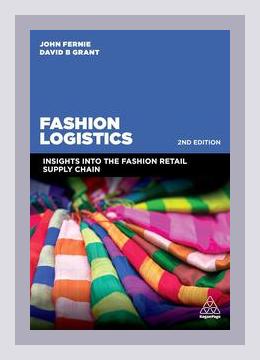Operations and Supply Chain ManagementService Operations
Overview
“Fashion Logistics: Insights into the Fashion Retail Supply Chain,” by John Fernie and David B. Grant, provides a comprehensive examination of the intricate and dynamic logistics involved in the fashion industry. The book delves into various facets of the supply chain, emphasizing its complexity, the importance of responsiveness, and technology’s role in optimizing operations. Structured into multiple chapters, each focusing on different elements of fashion logistics, the book offers practical insights and actionable strategies for enhancing efficiency and meeting market demands.
Chapter 1: Introduction to Fashion Logistics
– Major Points:
– Defines fashion logistics and its significance in the overall retail supply chain.
– Highlights the unique challenges within fashion logistics, such as seasonality, rapid changes in consumer preferences, and the need for speed.
– Concrete Examples:
– Discusses Zara’s responsive supply chain, highlighting its ability to adapt swiftly to fashion trends.
– Actionable Strategy:
– Businesses should implement real-time data analytics to monitor trends and consumer behavior, enabling swift adjustments to production schedules.
Chapter 2: The Fashion Supply Chain
– Major Points:
– Outlines the structure of a fashion supply chain from raw material procurement to end customer delivery.
– Describes different stakeholders involved, including suppliers, manufacturers, retailers, and logistics providers.
– Concrete Examples:
– The book discusses the collaboration between H&M and its suppliers to streamline production processes.
– Actionable Strategy:
– Firms should create strategic alliances with key suppliers to facilitate more efficient material sourcing and manufacturing processes.
Chapter 3: Distribution Channels
– Major Points:
– Explores various distribution channels available to fashion retailers, including brick-and-mortar stores, online platforms, and omni-channel strategies.
– Examines the benefits and limitations of each channel.
– Concrete Examples:
– Illustrates how ASOS leverages multiple distribution centers to serve online customers worldwide effectively.
– Actionable Strategy:
– Retailers should develop a robust omni-channel strategy to integrate physical and online stores, ensuring a seamless customer experience.
Chapter 4: Inventory Management
– Major Points:
– Stresses the importance of inventory management in fashion logistics due to the fast-changing nature of fashion trends.
– Explains various inventory management techniques such as Just-in-Time (JIT) and Vendor Managed Inventory (VMI).
– Concrete Examples:
– Describes how Levi’s uses VMI systems to reduce stockouts and overstock situations.
– Actionable Strategy:
– Implement JIT inventory systems to reduce holding costs and enhance responsiveness to market demand changes.
Chapter 5: Technology in Fashion Logistics
– Major Points:
– Discusses the critical role of technology in managing the fashion supply chain, including RFID, ERP systems, and blockchain for traceability.
– Emphasizes the importance of integrating technology to enhance visibility and efficiency.
– Concrete Examples:
– Highlights Burberry’s use of RFID tags to improve inventory accuracy and supply chain transparency.
– Actionable Strategy:
– Invest in RFID technology to track inventory accurately and improve supply chain transparency, resulting in better decision-making processes.
Chapter 6: Sustainable Fashion Logistics
– Major Points:
– Addresses the growing importance of sustainability within the fashion supply chain.
– Explores sustainable practices such as recycling, using eco-friendly materials, and reducing carbon footprints through optimized logistics.
– Concrete Examples:
– Mentions Stella McCartney’s commitment to sustainable sourcing and production practices.
– Actionable Strategy:
– Adopt green logistics practices, including the use of eco-friendly materials and optimization of transportation routes to reduce emissions.
Chapter 7: Risk Management in Fashion Logistics
– Major Points:
– Identifies various risks inherent in fashion logistics, such as supply chain disruptions, financial risks, and reputational risks.
– Provides strategies for mitigating these risks including diversification of suppliers and contingency planning.
– Concrete Examples:
– Describes how Nike diversifies its supplier base to minimize production risks.
– Actionable Strategy:
– Develop a robust risk management plan that includes supplier diversification and contingency plans for potential disruptions.
Chapter 8: Globalization of the Fashion Supply Chain
– Major Points:
– Examines the globalization of the fashion industry and the implications for logistics, including increased complexity and the need for efficient global coordination.
– Discusses the impact of international trade policies and regulations.
– Concrete Examples:
– Illustrates how companies like Inditex optimize their global supply chain networks to balance production and distribution.
– Actionable Strategy:
– Foster strong relationships with international trade partners and stay informed about trade policies to navigate global logistics more effectively.
Chapter 9: E-commerce and Fashion Logistics
– Major Points:
– Focuses on the rise of e-commerce and its impact on the fashion logistics landscape.
– Discusses the logistics of fulfillment, returns management, and the importance of last-mile delivery.
– Concrete Examples:
– Highlights Amazon’s fulfillment strategies which include strategically located warehouses and advanced return management systems.
– Actionable Strategy:
– Optimize last-mile delivery by using technology such as route optimization software to ensure timely and cost-effective deliveries.
Chapter 10: The Future of Fashion Logistics
– Major Points:
– Explores emerging trends and technologies that will shape the future of fashion logistics, including advanced robotics, AI, and the growing importance of sustainability.
– Predicts how consumer preferences and technological advancements will drive changes in supply chain practices.
– Concrete Examples:
– Discusses the potential of AI for predictive analytics in forecasting fashion trends.
– Actionable Strategy:
– Invest in AI technologies for predictive analytics to enhance forecasting accuracy and better align inventory management with market demands.
Conclusion
“Fashion Logistics: Insights into the Fashion Retail Supply Chain” offers an in-depth analysis of the fashion industry’s logistics, highlighting key areas such as inventory management, technology integration, sustainability, and risk management. By providing concrete examples and actionable strategies, Fernie and Grant equip readers with practical tools to navigate the complexities of the fashion retail supply chain effectively. Embracing these insights can lead to enhanced operational efficiency, better responsiveness to market changes, and a more sustainable fashion logistics approach.
